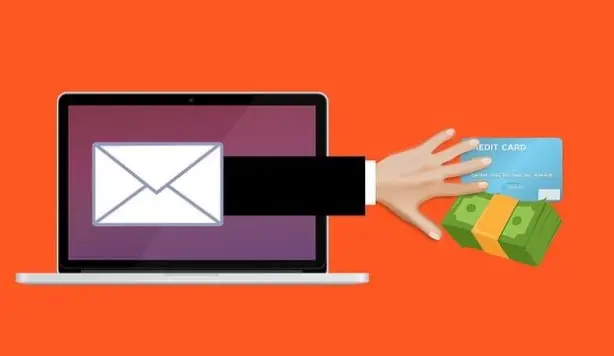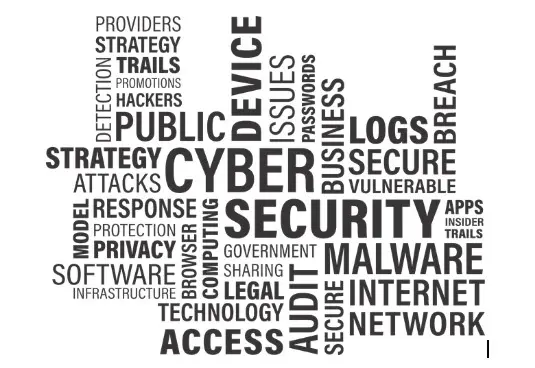In today’s digital age, the importance of cybersecurity cannot be overstated. With an increasing number of businesses relying on technology for their operations and the ever-growing threat of cybercrime, understanding the different types of security breaches has become crucial. Individuals and organizations can take the necessary steps to protect their information and mitigate potential risks by identifying and comprehending these breaches. This article will explore five types of security breaches that everyone should be aware of.

Understanding the Importance of Cybersecurity
In recent years, the world has witnessed a sharp rise in cybercrime. Hackers are constantly evolving their techniques, finding new ways to infiltrate systems and gain unauthorized access to sensitive data. As a result, the need for robust cybersecurity measures has become more evident than ever. By adopting sound cybersecurity practices, individuals and organizations can safeguard their digital assets and ensure their information’s confidentiality, integrity, and availability.
The Rising Threat of Cybercrime
Cybercrime has become a global epidemic, with billions of dollars lost each year due to various cyber-attacks. Criminals utilize sophisticated tactics such as phishing, malware, ransomware, and social engineering to exploit vulnerabilities in systems and networks. These attacks target large corporations and affect individuals and small businesses. It is crucial for everyone to be aware of the rising threat of cybercrime and take proactive measures to protect themselves.
One of the most common forms of cybercrime is phishing. Phishing attacks involve tricking individuals into revealing their personal information, such as usernames, passwords, and credit card details, by posing as trustworthy entities. These fraudulent emails or websites often appear legitimate, making it challenging for users to distinguish them from genuine ones. By falling victim to phishing attacks, individuals can unknowingly provide hackers with access to their sensitive information, leading to identity theft, financial loss, and other severe consequences.
Another prevalent form of cybercrime is malware. Malware refers to malicious software designed to disrupt, damage, or gain unauthorized access to computer systems. This includes viruses, worms, trojans, and spyware. Once a device is infected with malware, cybercriminals can remotely control it, steal personal information, or use it to launch further attacks. Malware can spread through infected email attachments, compromised websites, or even removable storage devices. It is crucial to have robust antivirus software installed and regularly updated to detect and remove malware from devices.
The Role of Cybersecurity in Protecting Information
Cybersecurity plays a vital role in protecting sensitive information from falling into the wrong hands. Individuals and organizations can minimize the risk of unauthorized access and data breaches by implementing measures such as firewalls, antivirus software, and encryption.
Additionally, cybersecurity professionals continuously monitor and assess systems, identifying vulnerabilities and implementing necessary patches to provide a secure environment.
Firewalls act as a barrier between internal and external networks, filtering incoming and outgoing traffic based on predetermined security rules. They help prevent unauthorized access to networks and can detect and block malicious activities. Firewalls can be hardware- or software-based, and their configuration depends on an organization’s or individual’s specific needs.
Encryption is another essential aspect of cybersecurity. It involves converting sensitive information into unreadable code, making it challenging for unauthorized individuals to decipher. Encryption is commonly used to secure data during transmission, such as online banking transactions or email communications. By encrypting data, even if it is intercepted, it remains unintelligible to anyone without the decryption key.
Furthermore, cybersecurity professionals play a critical role in maintaining the security of systems and networks. They are responsible for identifying vulnerabilities, conducting risk assessments, and implementing security controls. They stay current with the latest cybercrime threats and trends, ensuring that systems are adequately protected against emerging risks.
Cybersecurity professionals also play a crucial role in incident response, investigating security breaches, and implementing remediation measures to prevent future incidents.
In conclusion, cybersecurity is of paramount importance in today’s digital landscape. The rising threat of cybercrime necessitates individuals and organizations to adopt robust cybersecurity practices to protect their sensitive information. Understanding the various cyber-attack forms and implementing appropriate security measures can create a safer online environment for everyone.

Type 1: Physical Security Breaches
While many security breaches occur in the digital realm, it is important not to overlook the significance of physical security breaches. Physical security breaches involve the unauthorized access or theft of physical assets, such as laptops, external hard drives, or even printed documents. These breaches can lead to data breaches, identity theft, and financial loss.
Physical security breaches can have severe consequences, potentially exposing confidential information or compromising organizational infrastructure. It is crucial for organizations to implement robust security measures to prevent and mitigate such breaches.
What is a Physical Security Breach?
A physical security breach occurs when someone gains unauthorized access to a physical space or steals physical assets. This can happen through various means, including theft, social engineering, or even an insider threat. Physical security breaches can have severe consequences, potentially exposing confidential information or compromising organizational infrastructure.
One example of a physical security breach is when an employee leaves their laptop unattended in a public space, such as a coffee shop, and it gets stolen. This breach not only results in the loss of the physical asset (the laptop) but also puts any sensitive information stored on the laptop at risk.
Another example is when an unauthorized individual gains access to a restricted area by impersonating an employee or using forged identification. This breach can lead to unauthorized access to confidential information or even sabotage of critical systems.
Real-life Examples of Physical Security Breaches
There have been several high-profile cases of physical security breaches that highlight the importance of robust security measures. For instance, in 2017, a major credit reporting agency experienced a breach where personal information, including social security numbers and addresses, was stolen. The breach occurred due to weak physical security controls, allowing unauthorized individuals to gain access to sensitive data. Such incidents demonstrate the need for comprehensive physical security protocols to protect personal and corporate information.
In another case, a government agency had sensitive documents stolen from a secure facility. The breach was a result of an insider threat, where an employee with authorized access to the facility exploited their position to gain unauthorized access to the documents. This incident emphasized the importance of implementing physical security measures, conducting thorough background checks, and monitoring employee behavior.
These real-life examples serve as a reminder that physical security breaches can have far-reaching consequences, affecting individuals, organizations, and even national security. It is essential for businesses and institutions to prioritize physical security alongside digital security to ensure comprehensive protection against breaches.
Type 2: Network Security Breaches
Another critical type of security breach is network security breaches. Network security breaches occur when hackers gain unauthorized access to a network, compromising its infrastructure and potentially gaining access to sensitive data.
Understanding Network Security Breaches
Network security breaches involve a range of techniques, including hacking, malware, and man-in-the-middle attacks. These breaches can lead to significant consequences, such as unauthorized access to sensitive information, disruption of operations, and financial loss. Understanding the various methods employed by hackers is crucial in preventing network security breaches.
How to Prevent Network Security Breaches
There are several steps individuals and organizations can take to prevent network security breaches. Maintaining robust network security measures, such as firewalls and intrusion detection systems, can help identify and prevent unauthorized access.
Secondly, regularly updating and patching systems and software is crucial in mitigating vulnerabilities that hackers could exploit. Additionally, educating employees about the significance of cybersecurity and implementing strong password policies can greatly enhance network security.
Type 3: Application Security Breaches
With the increasing reliance on applications, the security of these software programs has become paramount. Application security breaches occur when vulnerabilities in applications are exploited, potentially leading to unauthorized access or the compromise of sensitive data.
The Danger of Application Security Breaches
Application security breaches can put both individuals and organizations at risk. When hackers exploit vulnerabilities in applications, they can gain unauthorized access to personal information, such as credit card details or login credentials. This information can then be used for fraudulent activities or sold on the dark web. Understanding the danger of these breaches is essential in implementing effective preventive measures.
Steps to Mitigate Application Security Breaches
Mitigating application security breaches requires a multi-faceted approach. Firstly, developers need to follow secure coding practices to reduce the chances of vulnerabilities in applications. Regularly updating software and applications is crucial to patching any existing vulnerabilities. Additionally, conducting thorough security testing and implementing web application firewalls can add an extra layer of protection against potential attacks.
Type 4: Cloud Security Breaches
Cloud computing has gained significant popularity in recent years due to its scalability and cost-effectiveness. However, this increased reliance on cloud services has also brought about new security challenges, making cloud security breaches an important concern.
The Reality of Cloud Security Breaches
Cloud security breaches involve unauthorized access to cloud-based data, applications, or infrastructure. These breaches can result in data theft, service disruptions, and reputational damage. The reality of cloud security breaches highlights the need for robust security measures to protect sensitive information stored in the cloud.
Best Practices for Preventing Cloud Security Breaches
Preventing cloud security breaches requires a combination of proactive measures and effective security practices. Firstly, organizations should carefully select a reputable cloud service provider that offers strong security controls and regular audits. Implementing strong access controls, including multi-factor authentication and encryption, can significantly enhance cloud security. Regularly monitoring cloud environments and conducting vulnerability assessments are also essential in identifying and mitigating potential vulnerabilities.
In conclusion, understanding various security breaches is crucial in today’s digital landscape. By recognizing the importance of cybersecurity and adopting preventive measures, individuals and organizations can mitigate the risks associated with these breaches. Physical security, network, application, and cloud security breaches pose unique challenges and require tailored security measures to protect sensitive information. By staying informed about the evolving threat landscape and implementing robust security practices, individuals and organizations can contribute to a safer digital world.
